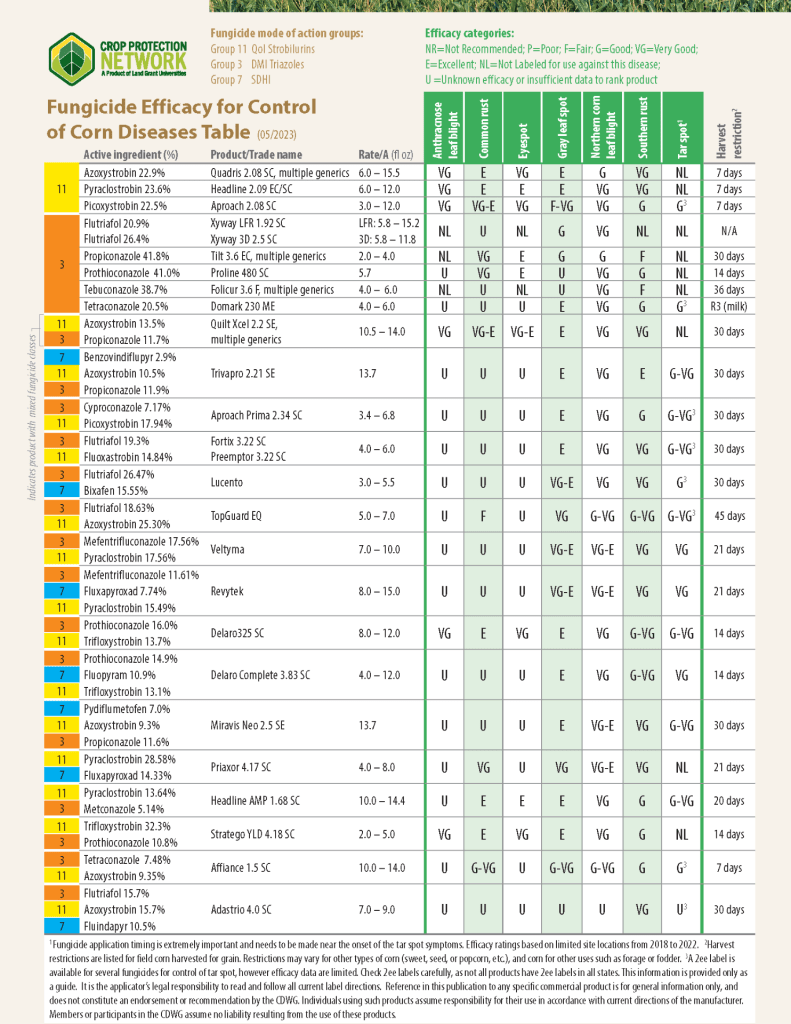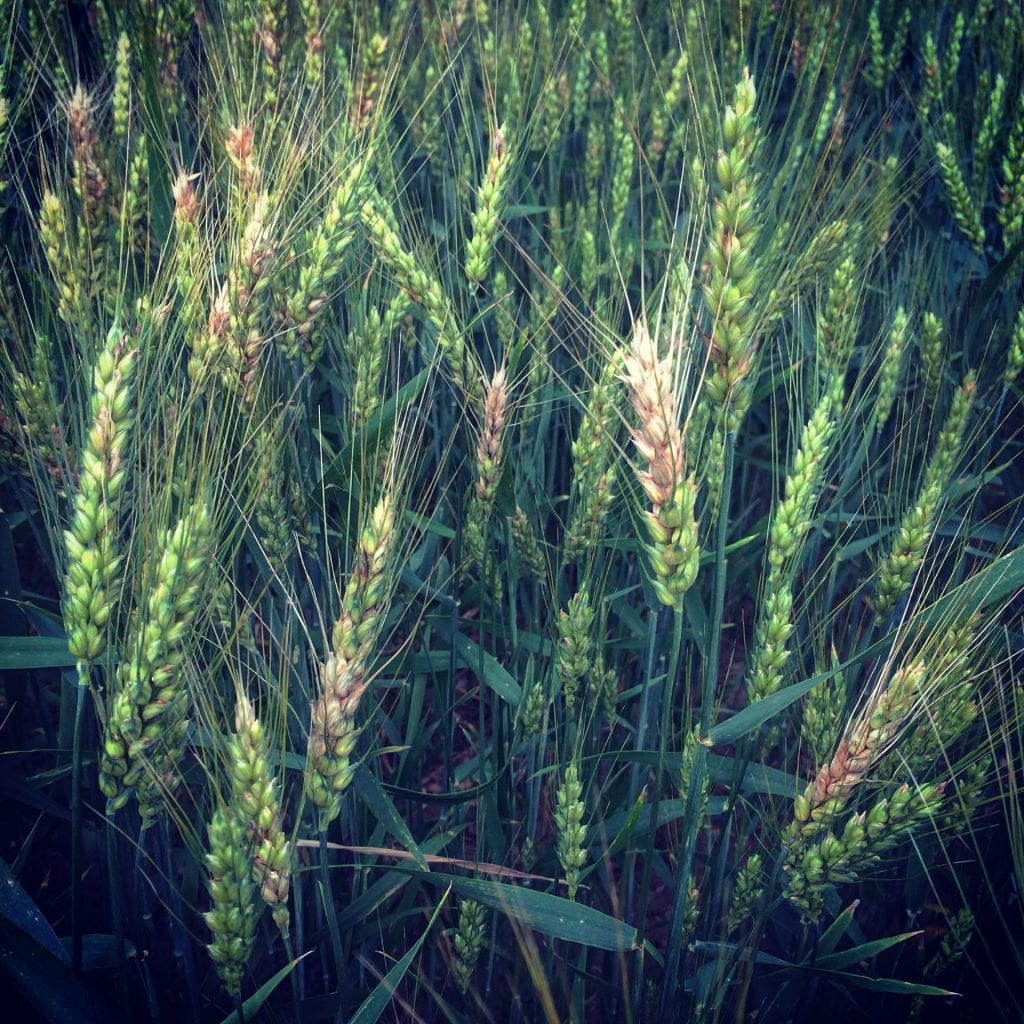Andrew Kness, Agriculture Agent
University of Maryland Extension, Harford County
As we get into the swing of the 2020 growing season, it can be helpful to have access to a quick reference for fungicide recommendations for if/when diseases become a problem on your farm. As you are aware, there are several products available for disease management and it can be difficult and confusing to select the appropriate product. Also remember that just because a pesticide is labeled for use on a particular crop to manage a specific pest, does not necessarily mean or guarantee that the pesticide will work to manage it. Pest populations are constantly evolving and therefore develop resistance to products over time. A good example of this is the fungicide, propiconazole; once very effective for managing head scab of wheat, is now ineffective against the pathogen.
To help aid your fungicide selections, the Crop Protection Network has some great resources on fungicide efficacy that they update each year (and soon to come, insecticides and herbicides). The Crop Protection Network is a multi-state and international partnership of university and provincial Extension specialists and public and private professionals that provides unbiased, research-based information.
These publications list the relative fungicide efficacy for the major diseases of corn, soybeans, and small grains and are linked below. If you have trouble accessing or interpreting the information, feel free to contact me.



